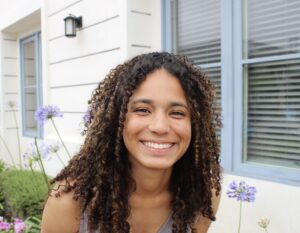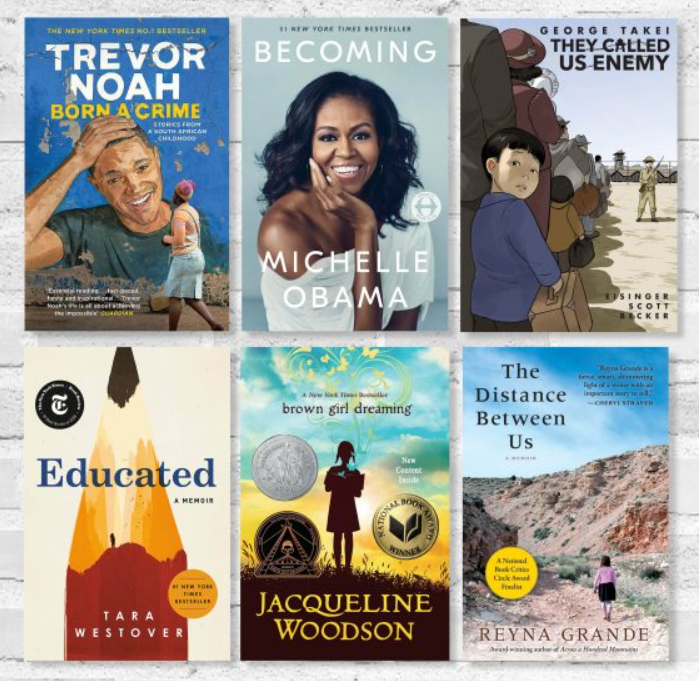 This blog post was written by NCTE member Ashleigh Navarro as part of a blog series celebrating the National Day on Writing®. To draw attention to the remarkable variety of writing we engage in and to help make all writers aware of their craft, the National Council of Teachers of English has established October 20 as the National Day on Writing®. Resources, strategies, and inclusion in a blog post does not imply endorsement or promotion by NCTE.
This blog post was written by NCTE member Ashleigh Navarro as part of a blog series celebrating the National Day on Writing®. To draw attention to the remarkable variety of writing we engage in and to help make all writers aware of their craft, the National Council of Teachers of English has established October 20 as the National Day on Writing®. Resources, strategies, and inclusion in a blog post does not imply endorsement or promotion by NCTE.
Sophomore English is centered around the theme of voice. Specifically, students are expected to grapple with what it is, who does and doesn’t have it, why it’s important, and how to use it. The first quarter essential questions were: What is a person’s voice? and How can I use my voice to express my ideas? I LOVED starting the year with these questions. It allowed me to start getting to know my students as humans and what matters most to them. This quarter we explored identities and voice through individual playlists, discussions around “The Danger of a Single Story,” memoir book clubs, and personal memoir vignettes. It’s important to note that students are still opening up to their classmates and myself, so I am eager to revisit these activities at the end of the year as vulnerability increases.
Playlists:
One of the first activities we did as a class was create individual Spotify playlists. They were expected to explain each song choice with either why they liked it or how the song described some part of their personality. I intentionally chose this activity to be one of the first activities they did on paper (rather than on their iPads) because it was important to me that students felt the feeling of handwriting without the pressure of performing for a certain grade. This activity allowed me to learn a little bit about who they are through the music they listened to, and what it meant to them. This activity anchored and began our journey in discovering our voice through writing.
The Danger of a Single Story:
Before starting memoir book clubs, as a class we watched the Ted Talk “The Danger of a Single Story” by Chimamanda Adichie. To my surprise, many of my students had already watched this Ted Talk and were familiar with the idea. Since many students had background knowledge, we were able to get into discussion quite quickly. Students stuck to the idea of stereotypes and how harmful they can be. To them, the danger of a single story is the possibility that someone’s voice would be spoken for before the person themself can express it. This also led students to think about how influencers use their platforms to provide multiple stories.
Memoir Book Clubs:
To center voices that aren’t always heard, I chose four memoirs for students to choose from and form book clubs around. Students had the choice between Born a Crime by Trevor Noah, Dreams from My Father by Barack Obama, The Best We Could Do by Thi Bui, and Educated by Tara Westover. The memoir book clubs allowed us to address literature standards such as central idea, figurative language, and how voice is conveyed through writing. However, the most important discussions out of the book clubs were the ones about each author’s voice and why it was such a big deal for us to be reading these memoirs. Trevor Noah’s memoir was the most meaningful for my students. I think the title of his memoir really stuck with my students as well as the not-so-long-ago historical context of the book. The group that read this memoir was able to really comprehend the complex journey and payoff that comes with using voice.
Memoir Vignettes:
This unit is ending with students writing their own memoir vignettes. We used “Mrs. Hughes’s House” from Brown Girl Dreaming by Jacqueline Woodson as a mentor text. Prior to the mentor text, students made timelines with events throughout their life. Students struggled with finding “exciting” or “interesting” moments to add to their timeline. I tried to workshop this by creating my own timeline in front of them. I added seemingly little events such as baking cookies with my mom and walking up a hill after sledding. Students were instructed to take one of these events and write about them after reading Woodson’s piece. Students annotated “Mrs. Hughes’s House” for figurative language and structure. My only requirement for their first draft was to get something on the paper that a reader could either hear, taste, feel, see, or smell.
Students are still working on their memoir vignettes and are just in the drafting stage. My goal with these vignettes was to get students writing about themselves and about the things that shape them. This unit has served as an introduction to voice. Students are struggling to open up but are slowly working toward it and finding their own voice through writing. These activities set the foundation on what voice is. I am both hopeful and excited to see how the voices of these students take shape and are shared with the world.
 I graduated from the University of Texas at Austin in 2021 and began my teaching career in Leander ISD. I taught both 5th and 4th grade in Leander before moving to Colorado where I currently teach high school English. I am also in graduate school studying Education Foundations and Policy. I hope to continue researching and learning how to dismantle harmful and inequitable schooling structures.
I graduated from the University of Texas at Austin in 2021 and began my teaching career in Leander ISD. I taught both 5th and 4th grade in Leander before moving to Colorado where I currently teach high school English. I am also in graduate school studying Education Foundations and Policy. I hope to continue researching and learning how to dismantle harmful and inequitable schooling structures.
It is the policy of NCTE in all publications, including the Literacy & NCTE blog, to provide a forum for the open discussion of ideas concerning the content and the teaching of English and the language arts. Publicity accorded to any particular point of view does not imply endorsement by the Executive Committee, the Board of Directors, the staff, or the membership at large, except in announcements of policy, where such endorsement is clearly specified.

